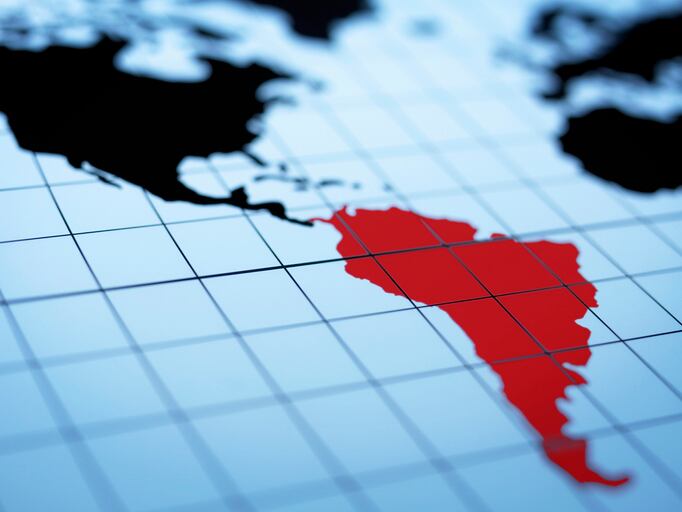Diageo released ‘disappointing’ H1 results yesterday: with the 23% organic net sales drop in its Latin America and Caribbean division dragging sales across the whole business down 0.6%.
In November, the company warned that the first half of fiscal 24 would see slower growth than H2 23 due to weaker performance in Latin America. CEO Debra Crew – who took over the reins of the company in June last year – yesterday pointed out that H1 24 is in line with the expectations it made last year: but emphasizes the company is ‘not satisfied with these results’.
Inventory issues
Attributed to the so called ‘COVID super-cycle’, Diageo saw the Latin America and Caribbean region experience an ‘extraordinary period of growth’ – increasing net sales value by 50% from 2019 to 2022 (on a constant currency basis).
And spirits were at the heart of this: with a strong focus on premiumization driving growth of brands such as Johnnie Walker, Don Julio and Smirnoff.
However, since this boom, macro-economic slowdowns in Diageo’s key Latin America markets have seen consumers step back from the spirits category. Instead, they've been downtrading to categories such as beer.
That means Diageo has been left with large quantities of inventory shipped in the first half of fiscal 23: which 'was not the right product and ultimately did not pull through to the consumer'. This build up in inventory levels at direct customers which Diageo flagged to investors in a profit warning in November.
Continued category declines and a weak consumer environment means this backlog has not yet been cleared.
“Lavanya [Chandrashekar, Diageo's CFO] and I have spent a lot of time with our LAC team since November to understand exactly what happened,” Crew told investors yesterday.
“And with the local teams, we have formulated action plans towards reducing inventory to more appropriate levels for the current consumer environment by the end of the fiscal and, most importantly, to be confident that this does not happen again.”
New tech and better info: Diageo's action plan
So what is this action plan? It's focused on expanding inventory visibility in Latin America: with Diageo incentivizing its top distributors to report sell-out information, allowing for better insight and forecasting. It will also increase investment to improve sales and operations planning, commercial planning and monitoring processes in the region.
Diageo's Latin America and the Caribbean (LAC) business comprises five divisions: Brazil, Mexico, Central America and Caribbean (CCA), Colombia and Venezuela (Andean), and South LAC (Argentina, Bolivia, Chile, Ecuador, Paraguay, Peru, and Uruguay).
And Diageo believes new tech could come into play in solving its problems: RFID labels, for example, will be used to track certain cases as they move through the distribution network.
Looking forward to the second half of the year, Diageo believes it can rein in this Latin America net sales decline to the region of 10-20%.
In an effort to learn from its experience in Latin America, Diageo has already conduced a global review to check the robustness of processes and mechanisms in other markets.
“Post this review, I am confident that we have the necessary processes, data, incentives and sell-out culture across all regions,” said Crew.
Broad footprint offers resilience
Resilience will also come, says Diageo, from this diversified global footprint (when Latin America is excluded, organic net sales growth for the company was up 2.5%).
Latin America and Caribbean only account, after all, for around 11% of Diageo’s global sales. And all other markets were in line with expectations for the first half of fiscal 24.
Diageo’s biggest market, by far, is North America, which accounts for 39% of sales, primarily from spirits in the US. This North American division did see a 1.5% drop in sales compared to H1 2023: but shows sequential improvement, says Crew.
In Europe – which accounts for 21% of net sales – sales grew 3.4%. And Africa – which accounts for 10% of net sales – saw strong growth of 9.3%, thanks to broad-based growth across beer.
Another key area of resilience is a broad portfolio, says Diageo. While scotch and tequila figures were dragged down by Latin America (down 10% for scotch and 6% for tequila), these categories remain key priority areas for Diageo.
Beer – which includes global heavyweight Guinness – was up 14% in H1; Chinese white spirits (principally the Shui Jing Fang brand) were up 32%; whiskey sales excluding scotch also grew.
"Diageo has a track record of navigating volatility - we have done it before, and we will do it again," concluded Crew. "We are diversified by category, price point and region, and will continue to invest behind our iconic brands and actively manage the portfolio to maintain our position as an industry leader in total beverage alcohol, an attractive sector with a long runway for growth.
"My focus is to generate long-term, sustainable value for shareholders by driving performance of our brands, especially in scotch, tequila and Guinness, meeting global consumers' evolving tastes and stepping up our operational excellence to win quality market share.
"The job to be done is clear. And we have both the long-term strategy and have put in shorter-term interventions to do it."

